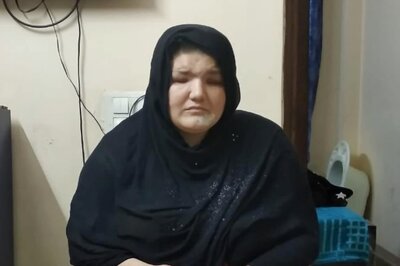
views
Can you bring food past TSA?
Yes, TSA allows you to bring solid foods, but no liquids exceeding 3.4 oz. For example, you can bring a sandwich from home through the TSA line – it can even have mayonnaise on it, as long as it doesn't make the sandwich excessively soggy. But if you want to bring an 8 oz jar of mayonnaise, you must pack it in your checked luggage. Otherwise, if it's in your carry-on, TSA will make you discard it. It's ultimately up to each agent's discretion whether or not to allow a food item to pass through their checkpoint. If one of your food items raises their suspicions or triggers a security alarm for some reason, they have the authority to discard it – even if it's not on the restricted list and you packed it properly.
List of Food Items You Can Take Through TSA
TSA allows you to pack any solid food item in your carry-on. As long as it fits in the bag and isn't a liquid, gel, aerosol, cream, or paste, you can bring it in any amount or quantity. That includes items like: Bread Candy Cheese slices Chocolate (solid, like chocolate candy) Cookies Crackers Dried fruits Eggs Nuts Dry pet food Pies and cakes Pizza Protein or energy powders Salt Sandwiches Snack bars Snack items (i.e., pretzels, chips, etc.) Spices Tamales Tea bags or dried tea leaves
TSA allows you to bring breast milk, formula, and baby juice. These items are considered medically necessary and aren't restricted by amount, meaning you can transport more than 3.4 oz of it in a single container. Anyone traveling with these items is encouraged to pack them in clear plastic bottles so they're easier for TSA agents to examine. TSA also recommends letting the TSA agent know before they open your bag that you're carrying breast milk, baby formula, or baby juice to expedite the inspection process. You can also ask them not to X-ray the bottles if that's your preference.
List of Food Items TSA Restricts
TSA restricts liquids, gels, aerosols, creams, and pastes in carry-ons. Due to past incidents when TSA found liquid explosives in someone's carry-on luggage, they now only allow you to pack liquid or near-liquid items like gels, aerosols, creams, and pastes in your carry-on if each one fits in a 3.4 oz (or smaller) container. Below is a list of foods that fall into these categories: Alcohol (equal to or less than 140 proof or 70% alcohol) Bottled water Canned foods Cheese (creamy or liquid) Chocolate (liquid, like chocolate syrup) Coffee Creamy dips and spreads Fruit or vegetables (liquid or gel form) Gravy Honey Hummus Ice cream Jam and jelly Juices (not for babies) Maple syrup Oils and vinegars Peanut butter (and other nut butters) Wet pet food Salad dressing Salsa and sauces Soda Soups Yogurt
How to Bring Food Through TSA
Store solid food items separately in clear plastic bags or containers. Even though TSA allows solid foods, the agents must still examine the items you bring through. To make the process flow as quickly as possible, store your snacks, sandwiches, and other solid foods in separate, clear containers. Then, when you pack them in your carry-on, put them in an easy-to-reach spot so you can remove them if a TSA agent requests you to do so.
Follow the 3-1-1 rule when packing liquid foods in your carry-on. When packing your carry-on, TSA requires travelers to follow the 3-1-1 rule. This rule has three requirements: each separate liquid, gel, aerosol, cream, or paste must not exceed 3.4 oz; all the separate containers for these items must fit in a zip-top, quart-sized plastic bag; and each passenger is only allowed one quart-sized plastic bag each. If you're packing liquid food to go with your solid food, separate those items, as well. For example, if you're taking a salad through TSA, store the salad dressing in a 3.4 oz (or smaller) container and put it in a quart-sized plastic bag in your carry-on to adhere to the 3-1-1 rule.
Store breast milk, baby formula, and baby juice in clear, plastic bottles. Pack them in your carry-on and then inform the TSA agents before they start inspecting your bag that you're carrying these items for a baby or child (you don't have to have your child with you, though). The bottles can be larger than 3.4 oz as long as they fit neatly in your bag and are easy to remove when needed.
When in doubt, pack liquid food items in your checked luggage. While TSA prohibits packing liquids in quantities higher than 3.4 oz in your carry-on, there are no such restrictions for your checked luggage. If you have a food item larger than 3.4 oz that doesn't fit into any of the solid food categories, pack it in your checked bag to avoid TSA throwing it out.




















Comments
0 comment